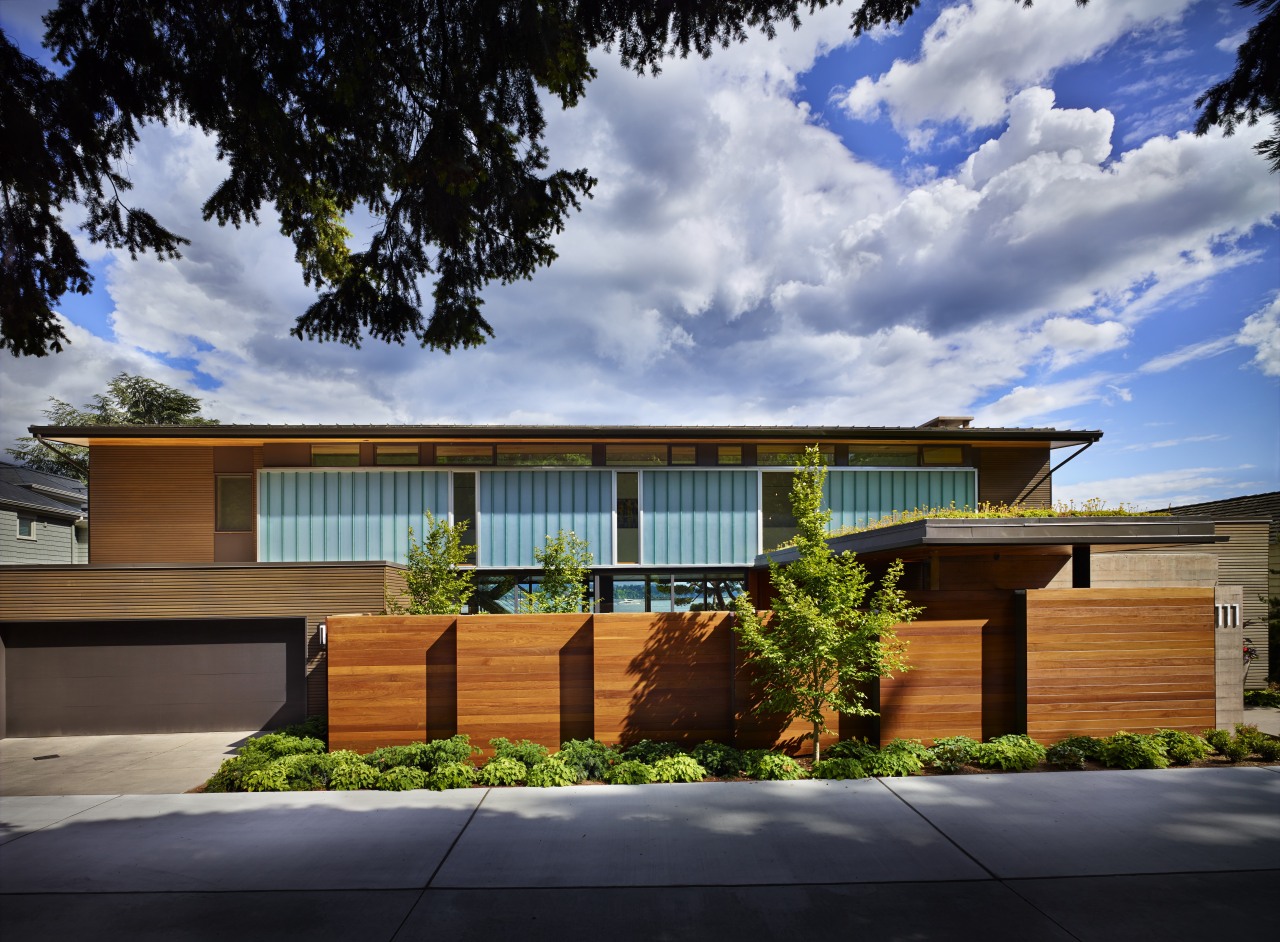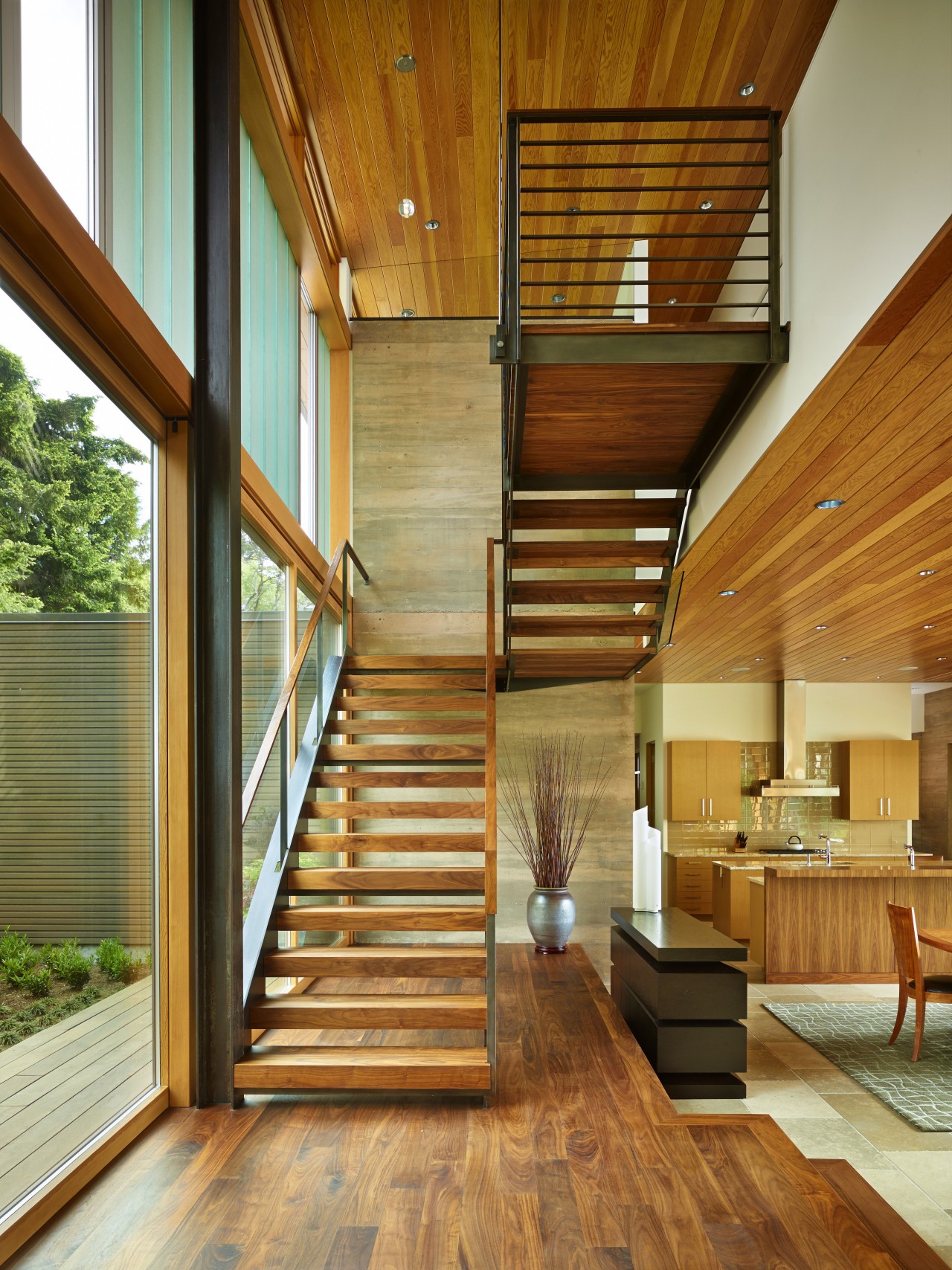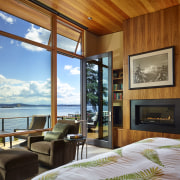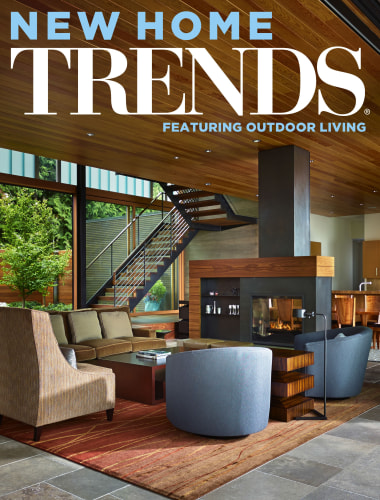Sound of water
Sound of water expansive home on constrained site.

A verse form with strict style constraints will often bring out the best in a poet. And for an architect, tight environmental restrictions can also inspire a particularly imaginative response.
Such was the case with this new home, by principal John DeForest and project architect Ted Cameron of DeForest Architects. The owners had looked at several properties in the area before settling on a long, relatively narrow option that offered spectacular outlooks to the lake and mountains, says DeForest.
"The site fronted onto the lake on one side and was bordered by a public lane. The owners naturally wanted their home to offer privacy on the laneway side, and open up to the views on the other. They also requested that the residence be modern, but warm and welcoming, and have strong indoor-outdoor connections."
With the existing house on the site razed, DeForest designed a generously sized, two-level residence to fit neatly into the available space.
The issue of privacy from the lane was addressed in several ways, says Cameron.
"First there are levels of separation between the street and the large pivoting front door.
"Planting softens a staggered ipeª wall, and there's a large entry court behind that."
While the wall and courtyard buffer the lane traffic, the exterior treatment of the house on this side adds to its tucked-away feel.

"Despite having two levels, the house strikes a low profile when viewed from the street," says DeForest. "We emphasised the bold horizontal lines in the design, which you see in the fence, the wood cladding and the shape of the house itself."
The cladding has a thin profile, which is a more contemporary interpretation of the traditional weatherboards on neighbouring houses. The multitude of slender lines also help further the horizontal emphasis.
"To optimise natural light and privacy we introduced a band of channel glass along the upper level of this side of the home," Cameron says. "The translucent green glass adds texture, and casts a lovely light on the interior. This glass also features translucent insulation."
The entry path runs alongside the courtyard to a solid swing door that opens to a double-height entry space. Straight ahead is a dramatic great room that incorporates the kitchen, dining and living spaces in one volume. Beyond this there are waterfront entertaining spaces, which include a contemporary excercise room and office. Stairs to the left lead up to the master suite and bedrooms, all pushed to the scenic side of the house, which opens out to a series of decks.
The impact of the great room is even greater for its absence of structural support columns.
"To keep the room uncluttered, the wood ceiling is suspended from the concealed steel framework above," Cameron says.
Floor-to-ceiling doors in the great room open to the entry patio and the lakefront terrace.
DeForest says addressing issues of heating and cooling was vital, given the extreme climate of the region.

"Pulled back, the large doors offer efficient cross ventilation in summer. In winter, in-floor heating and the centrally set, custom steel and wood fireplace keep the interiors warm and snug."
While the house nestles demurely beside the lake, the choices of materials tie it even more closely into the natural setting.
The principal construction materials are wood, steel, glass and stone, but board-formed concrete is seen outside the entry and behind the steel and wood stair. The raw, industrial look of the concrete contrasts the smooth polish of the wood finishes.
"The generous use of wood seen on the front wall and cladding is continued on the interior," says Cameron. "A variety of species is used for textural interest the ceiling is fir, for example, and the kitchen cabinetry and fireplace are in rich-grained walnut. Other natural materials include the limestone floors that feature throughout, with the exception of the entry passage, which has a walnut floor."
The great room's expansive volume offers subtle demarcations for different areas. The large fireplace buffers the living spaces from the dining area, and a tall island screens kitchen clutter from the adjacent dining table. The L-shaped kitchen has a second island to the rear for food prep. A large pantry and most appliances are to one side, out of sight.
Interior designer Nancy Burfiend says low-profile furniture with clean lines was selected to avoid detracting from the views.
"Warm wood tones, a neutral palette, and textural fabrics foster the connection to nature."
Credit list
Architect
Landscape designer
Builder
Roofing
Skylights
Paints
Heating
Floor coverings
Custom steelwork
Interior designer
Structural engineer
Cladding
Doors and windows
Flooring
Lighting
Furniture
Blinds
Kitchen cabinetry
Story by: Charles Moxham
Home kitchen bathroom commercial design
Classic looks, contemporary efficiency
Diving into nature
Personality plus
Home Trends Vol. 30/10
New Home Trends features top locations from New Zealand and the rest of the world. New Home Trends is dedicated to provi...
Read More









